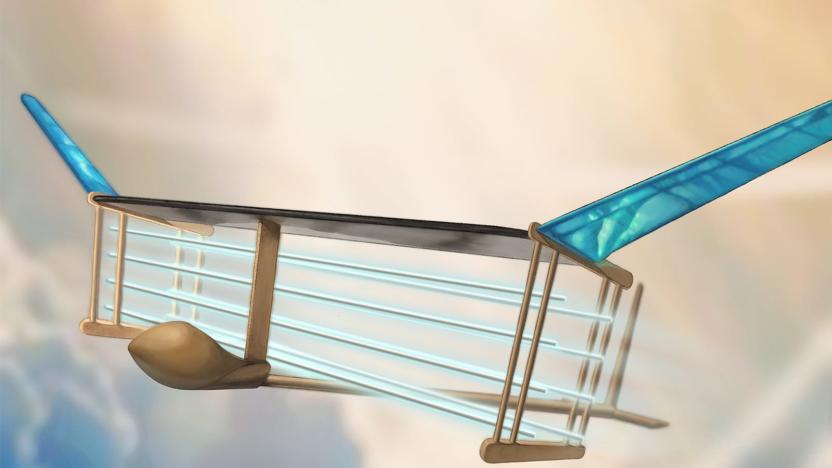ionicwind
Latest

Ion-powered aircraft flies with no moving parts
As clean as electric aircraft can be, there's still one kind of pollution they still produce: noise. Even that might go away before long, though. MIT researchers have successfully flown an ionic wind-powered aircraft that doesn't use any moving parts. The 16-foot wide machine stays aloft by charging wires with a high enough voltage (40,000V) that they strip negatively-charged electrons from air molecules, which are promptly attracted to negative electrodes at the back of the aircraft. The collisions from that newly-formed ionic wind create the thrust needed to keep the vehicle airborne.

DARPA fights fire with sound and electricity, hopes 'ionic wind' could save lives in the field
Fire, frenemy of humanity since time immemorial. Typical extinguishing methods have involved water, chemicals and even blankets, but DARPA wanted to see if there was another, more pragmatic way. Starting with the understanding of fire actually being a cold plasma, DARPA then explored fire's electromagnetic and acoustic qualities, and discovered two potential ways to quell the flame, one using electrons, the other, sound. The electron technique creates an oscillating field that separates the fire and fuel dubbed "ionic wind," the other method creates an acoustic field that increases the air velocity (thinning the flame boundary) and causes the flames to widen and drop in temperature, dispersing the fire's energy. The concepts have been proven, but scaling these up to real world solutions is a whole different matter. Light up the videos after the break to see them in action.

Ionic cooling system adapted for laptop use, scalded legs cautiously rejoice
To be totally candid, we can't even utter the word "ionic" without thinking of Sharper Image, but the concept here actually seems like one that just might benefit the public at large... or at least those of us forced to cook our upper legs on a daily basis. San Jose-based Tessera, in cooperation with the University of Washington, has adapted an ionic cooling system for use in everyday laptops. The magic elixir consists of two electrodes, one of which is used to ionize air molecules such as nitrogen, while the other acts as a receiver for those molecules. According to reports, this method can extract around 30 percent more heat from a lap burner than the traditional "fan and more fans" approach. Still, a major obstacle remains in terms of ensuring that the electrodes remain reliable throughout the life of a laptop, but if Tessera has its druthers, some form of the system will be commercialized next year.

Researchers use "ionic wind" to cool computer chips
A team of researchers at Purdue University look to be doing their best to put conventional computer cooling techniques to shame, to that end developing a prototype system that uses an "ionic wind" to keep chips cool, something they say could eventually allow for much more powerful computers. According to the BBC, the system employs an ionic engine that produces positively charged particles when a voltage is applied to it. Those particles are then naturally drawn to a negatively charged wire, resulting in a constant air movement over the chips. That, the researchers say, increases the cooling rate from a conventional fan by up to 250%. They're apparently far from satisfied with the system just yet though, and they're now working to make it a hundred times smaller than its current size -- a feat all the more daunting considering that it already measures just a few millimeters.[Thanks, Xander and Del Monte]



